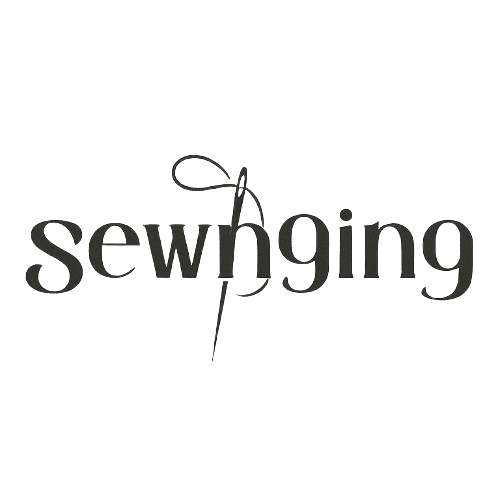Embarking on the journey of sewing can be as thrilling as it is rewarding, offering a unique blend of creativity and practicality that spans centuries. For beginners, stepping into the world of sewing starts with understanding the “Sewing Essentials for Beginners,” a foundation that paves the way for all the projects and masterpieces that lie ahead. So let’s begin our detailed Intro to sewing for beginners.
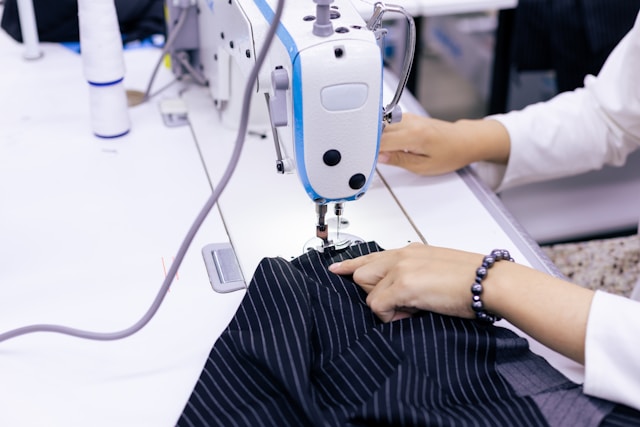
Key Takeaways
- Understanding basic sewing skills.
- Difference between hand and machine sewing.
- Tips for beginners.
- Easy patterns to start with.
Getting Started with the Basics
At its core, sewing is about transforming fabric into something new, whether it’s clothing, accessories, or decorative items for your home. But before you dive into your first project, there are some basic essentials you’ll need to get started:
- Sewing Machine: The heart of many sewing projects, a sewing machine can range from simple, beginner-friendly models to complex machines with numerous features. Starting with a basic model that allows for straight and zigzag stitches is often best for beginners.
- Fabric: Choose materials that are easy to work with, such as cotton, which doesn’t stretch or slip while sewing. Your choice of fabric can greatly affect the outcome of your project, so starting with something manageable is key.
- Basic Sewing Tools: Scissors, measuring tape, pins, a seam ripper, and an iron are indispensable. High-quality scissors can make a significant difference in your sewing experience, ensuring clean cuts and ease of use.
- Thread: Selecting the right thread color and quality that matches your fabric will lead to more professional-looking results.
- Patterns: Begin with simple patterns that have straightforward instructions and minimal pieces. Patterns can guide you through the process and help you understand the basics of construction.
Practicing Basic Techniques
Before you start your first project, familiarize yourself with basic sewing techniques:
- Threading Your Machine: Knowing how to correctly thread your machine and fill a bobbin are fundamental skills that will start your project on the right foot.
- Learning Basic Stitches: Practice makes perfect. Start with straight stitches, gradually moving to more complex ones like zigzag or backstitch to secure your work.
Creating Your First Project
Your first project should be something simple, such as a pillowcase or tote bag, which doesn’t require fitting or complex construction. This will allow you to practice sewing straight lines and get a feel for how fabric moves through your machine.
The Joy of Learning
Remember, every seamstress or tailor started somewhere, and making mistakes is part of the learning process. The key to becoming proficient in sewing is practice and patience. As you grow more comfortable with your sewing machine and tools, you’ll find that your skills will naturally improve, allowing you to tackle more complex projects with confidence.
Sewing offers a rewarding way to express creativity while producing functional and beautiful items. With the right essentials and a bit of practice, anyone can embark on this creative journey. So gather your “Sewing Essentials for Beginners,” and let’s start stitching up dreams one seam at a time.
What are Basic Sewing Skills?
Mastering the art of sewing begins with a solid foundation in basic sewing skills. These fundamental techniques are the building blocks for all sewing projects, from the simplest to the most complex. Understanding and practicing these skills will not only enhance the quality of your work but also increase your confidence as you progress to more challenging projects.
Threading a Needle and Tying a Knot
A seemingly simple task, threading a needle, is the first step in any hand-sewing project. It requires patience and precision. Equally important is learning how to tie a secure knot at the end of your thread to prevent it from pulling through the fabric as you start stitching.
Running Stitch and Backstitch
The running stitch is one of the most basic and versatile stitches in sewing. It can be used for everything from seam sewing to gathering fabric. The backstitch, on the other hand, is stronger and more durable, making it ideal for seams that require more strength.
Sewing a Seam
A seam joins two pieces of fabric together, and mastering this skill is essential for constructing garments and other items. Learning to sew a straight, even seam is crucial for the overall appearance and structure of your project.
Hemming
Hemming is the process of finishing the edge of a piece of fabric to prevent fraying and to give a clean, professional look. There are several hemming techniques, including the double fold hem, which is both simple and effective for beginners.
Sewing on a Button
A practical skill for everyday life, sewing on a button is something every beginner should learn. It involves creating a shank for the button to sit properly on the fabric and ensuring it’s securely attached.
Using a Sewing Machine
For those who choose to use a sewing machine, understanding its basic operation—including how to thread it, load the bobbin, and select the correct stitch setting—is essential. Practicing straight and zigzag stitches on scrap fabric can help beginners get comfortable with their machine.
Pressing
Often overlooked by beginners, pressing is an integral part of sewing that can significantly impact the finished look. Proper pressing techniques can help seams lay flat, shape fabric to your desire, and give your project a polished appearance.
By focusing on these basic sewing skills, beginners can lay a strong foundation for their sewing journey. Practice, patience, and persistence are key, as these skills will become second nature over time, allowing for creativity and complexity to flourish in your sewing projects.
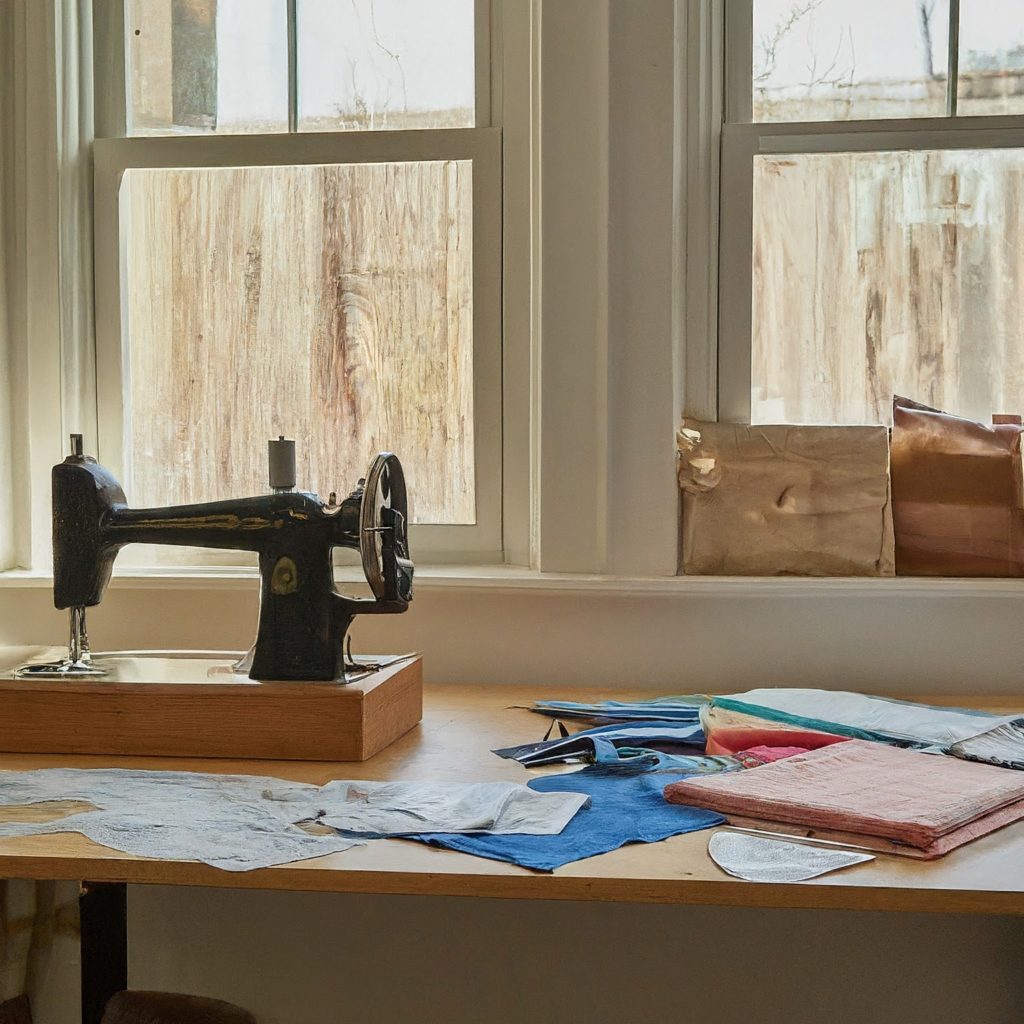
Hand Sewing vs. Machine Sewing
| Aspect | Hand Sewing | Machine Sewing |
|---|---|---|
| Precision and Flexibility | High precision, allows meticulous control over every stitch. Ideal for detailed work such as embroidery, attaching buttons, and finishing touches. | Efficient for long seams and large projects. Uniform stitches with adjustable settings for different fabrics. |
| Efficiency and Strength | Lower than machine sewing. Suited for smaller or more detailed projects that require careful attention. | High, can complete tasks quickly and stitches are strong. |
| Suitability | Best for detailed work, small projects, and when needing portability. | Ideal for large projects or those with tight deadlines. Offers a variety of stitches for functionality and decoration. |
| Portability | Highly portable, can be taken anywhere. | Limited by the need for electricity and the sewing machine’s size. |
| Investment Required | Minimal, requires basic tools like needles, thread, scissors. | Higher, involves purchasing a sewing machine and possibly additional accessories. |
| Learning Curve | Varies, depends on the complexity of techniques but generally higher due to the precision required for even stitches. | Can be significant, especially for advanced sewing machines with multiple features. |
My Favorite Sewing Tips for Beginners
Embarking on your sewing journey can be as exciting as it is daunting. To help ease the transition from novice to confident sewer, I’ve compiled my favorite sewing tips. These suggestions are designed to streamline your learning process, enhance your sewing projects, and ensure that your sewing experience is as enjoyable and productive as possible.
Organize Your Workspace
A clutter-free and well-organized workspace can significantly impact your sewing efficiency and creativity. Ensure that all your sewing essentials—fabrics, scissors, threads, and needles—are neatly arranged and within easy reach. An orderly space not only saves time but also keeps you focused and inspired.
Understand Your Fabric
Familiarize yourself with different fabric types and their characteristics. Some fabrics, like cotton or linen, are easier to sew and perfect for beginners, while others, like knit or satin, can be more challenging due to stretch or slipperiness. Knowing your fabric will help you choose the right projects and avoid frustration.
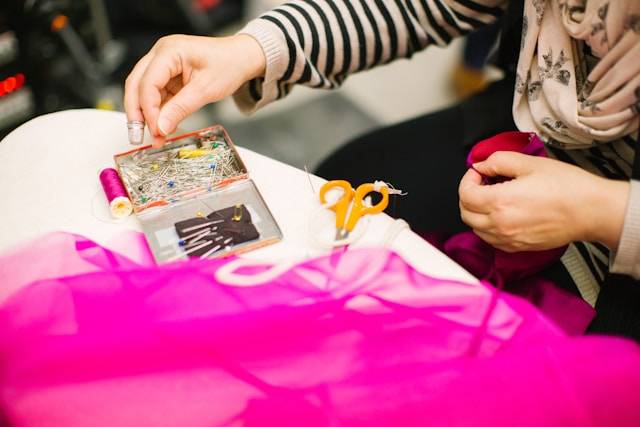
Practice Patience
Patience is perhaps the most crucial skill in sewing. Don’t rush through learning new techniques or completing projects. Mistakes are inevitable but invaluable learning opportunities. Take your time to practice stitches, understand patterns, and refine your technique. Remember, every stitch brings you closer to mastering sewing.
Experiment and Learn
Don’t be afraid to experiment with different stitches, fabrics, and patterns. Each project, whether successful or not, is a stepping stone in your sewing journey. Utilize online tutorials, sewing forums, and community classes to expand your knowledge and skills.
Incorporating these sewing tips into your practice can dramatically improve your sewing projects. Organizing your workspace, understanding fabric types, practicing patience, and being open to learning and experimentation is key to developing your sewing prowess.
Beginner Sewing Patterns to Try
Diving into the world of sewing can be both exhilarating and overwhelming for beginners. The key to a successful start is choosing the right projects that are not only simple but also rewarding. To assist you on this journey, here are some beginner-friendly sewing patterns that promise a smooth introduction to sewing, fostering your skills and boosting your confidence.
Tonic Tee by SBCC Patterns
A staple in any wardrobe, the Tonic Tee is a perfect starting point for beginners. This basic tee pattern is designed with petite sizes in mind but accommodates a wide range of bust measurements. Its simplicity makes it an excellent project for practicing straight seams and getting accustomed to working with knit fabrics. The pattern is available for free, making it an accessible option for those just starting out.
Zero Waste No.2 by Schnittchen Patterns
Embrace sustainable sewing with the Zero Waste No.2 pattern. This unique woven top pattern is designed to leave no fabric waste, combining eco-friendly practices with beginner sewing. Its unusual shape and gathered hem introduce beginners to more creative sewing techniques while still being manageable for those with limited experience.
Sorbetto Top by Seamwork
The Sorbetto Top is a lovely woven tank top featuring a central box pleat, offering beginners a chance to work on something a little more detailed without being overly complex. The pattern is free to download and provides an opportunity to learn about pleats, darts, and finishing techniques.
Additional Patterns for Varied Projects
- Skirts and Trousers: For those looking to venture into sewing pants or skirts, the Artist Wrap Skirt by Artist Made Patterns is an excellent choice. Its beautiful gathered wrap design is flattering and easy to make, providing a fantastic way to learn about creating gathers and working with wraps.
- Pants and Leggings: The Mountain Pose Pants by Hey June Handmade and the Peg Legs by Patterns for Pirates offer straightforward designs ideal for beginners interested in making comfortable, everyday wear.
These patterns not only cater to a variety of styles and preferences but also serve as a foundation for developing essential sewing skills. By starting with these beginner-friendly projects, you’ll gain experience in reading patterns, choosing the right fabrics, and mastering basic sewing techniques. Remember, the best way to learn is by doing, so choose a pattern that excites you and start stitching!
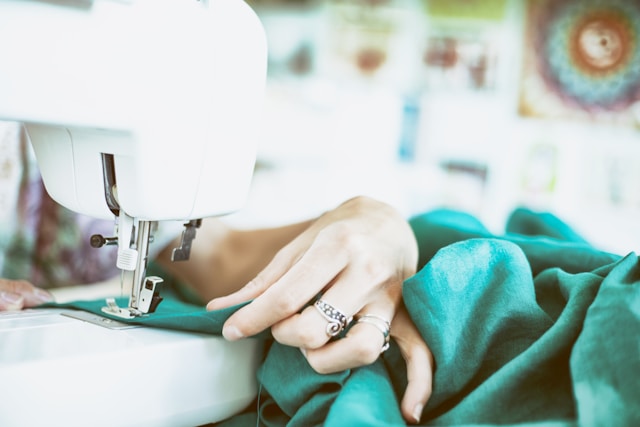
What is the Easiest Thing to Sew for Beginners?
For those new to the world of sewing, starting with projects that are straightforward yet gratifying is crucial for building confidence and honing skills. Certain beginner-friendly projects stand out for their simplicity, practicality, and the immediate satisfaction they provide. Here, we explore some of the easiest and most rewarding sewing projects perfect for those just starting their sewing journey.
Pillowcases
Pillowcases are an excellent starting point for beginners. They require minimal fabric and offer a practical way to practice straight stitches and seams. Crafting a pillowcase can introduce beginners to basic concepts like fabric grain, seam allowances, and the art of finishing edges neatly. Plus, the customization options in terms of fabric selection and embellishments like lace or piping make this project not only easy but also fun.
Tote Bags
Tote bags are another ideal project for novices. They’re incredibly versatile and useful, making them rewarding projects that beginners can proudly use or gift. Tote bags introduce essential sewing skills such as creating handles, attaching them securely, and working with heavier fabrics. This project can also serve as a foundation for more complex bags and accessories in the future.
Simple Skirts
Simple skirts, such as A-line or gathered waist skirts, are perfect for beginners looking to venture into garment sewing. These projects typically require few pattern pieces and introduce beginners to fundamental garment construction techniques, including hemming, creating casings, and inserting elastic. Skirts offer the added benefit of teaching fabric drape and movement, crucial knowledge for future apparel projects.
Each of these projects is not only approachable for beginners but also opens the door to a wide range of sewing possibilities. By starting with pillowcases, tote bags, or simple skirts, beginners can gradually build their sewing repertoire, exploring more complex patterns and techniques as their confidence grows. Remember, the key to mastering sewing is patience, practice, and starting with projects that spark your interest and creativity.
Also read: How to sew hats for beginners
FAQs for Sewing Beginners
How do I start sewing for beginners?
Starting your sewing journey begins with gathering the essential tools: a reliable sewing machine (or a basic needle and thread for hand sewing), fabric scissors, measuring tape, pins, and fabric. Begin by familiarizing yourself with your sewing machine, understanding basic stitches, and practicing on scrap fabric. Online tutorials, sewing classes, and beginner sewing books are invaluable resources. Start with simple projects like pillowcases or tote bags to build confidence.
What is the introduction of sewing?
Sewing is a timeless craft that involves joining fabric pieces together using a needle and thread, either by hand or with a machine. It’s a skill that dates back thousands of years, essential for making clothing, accessories, and home decor. The introduction to sewing usually involves learning about different types of stitches, fabrics, and sewing tools, along with basic techniques to start creating simple projects.
What are the basics of sewing?
The basics of sewing include understanding different types of stitches (such as running stitch, backstitch, and zigzag stitch), how to thread a needle and use a sewing machine, selecting appropriate fabric and thread, cutting fabric correctly, and mastering straight seams. Learning to read and follow sewing patterns is also a fundamental skill for progressing beyond beginner projects.
Can I teach myself sewing?
Yes, many people successfully teach themselves to sew using online resources, books, and practice. Start with simple projects and gradually challenge yourself with more complex ones as your confidence grows. Online sewing communities and video tutorials can provide support and answer questions you may have along the way.
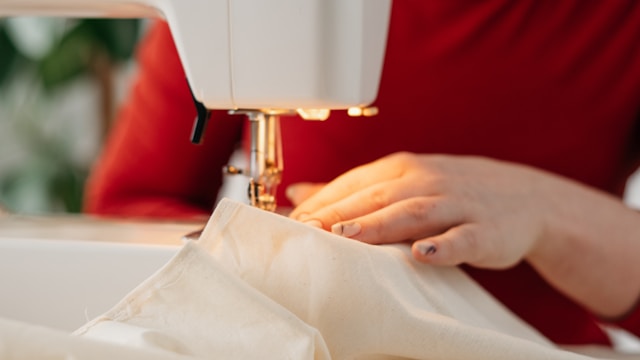
Why is basic sewing important?
Understanding basic sewing techniques is crucial for anyone looking to create or alter clothing and fabric items. It allows for the customization of garments, repairs to extend the life of clothing, and the ability to create unique and personalized items. Basic sewing skills also serve as the foundation for more advanced sewing projects and techniques.
Is sewing a skill or hobby?
Sewing can be both a skill and a hobby. As a skill, it’s valuable and practical knowledge used in fashion design, costume making, and upholstery. As a hobby, it offers a creative outlet and a means of relaxation, allowing individuals to create handmade items for themselves and others. Whether pursued professionally or for pleasure, sewing enriches the lives of those who practice it.
